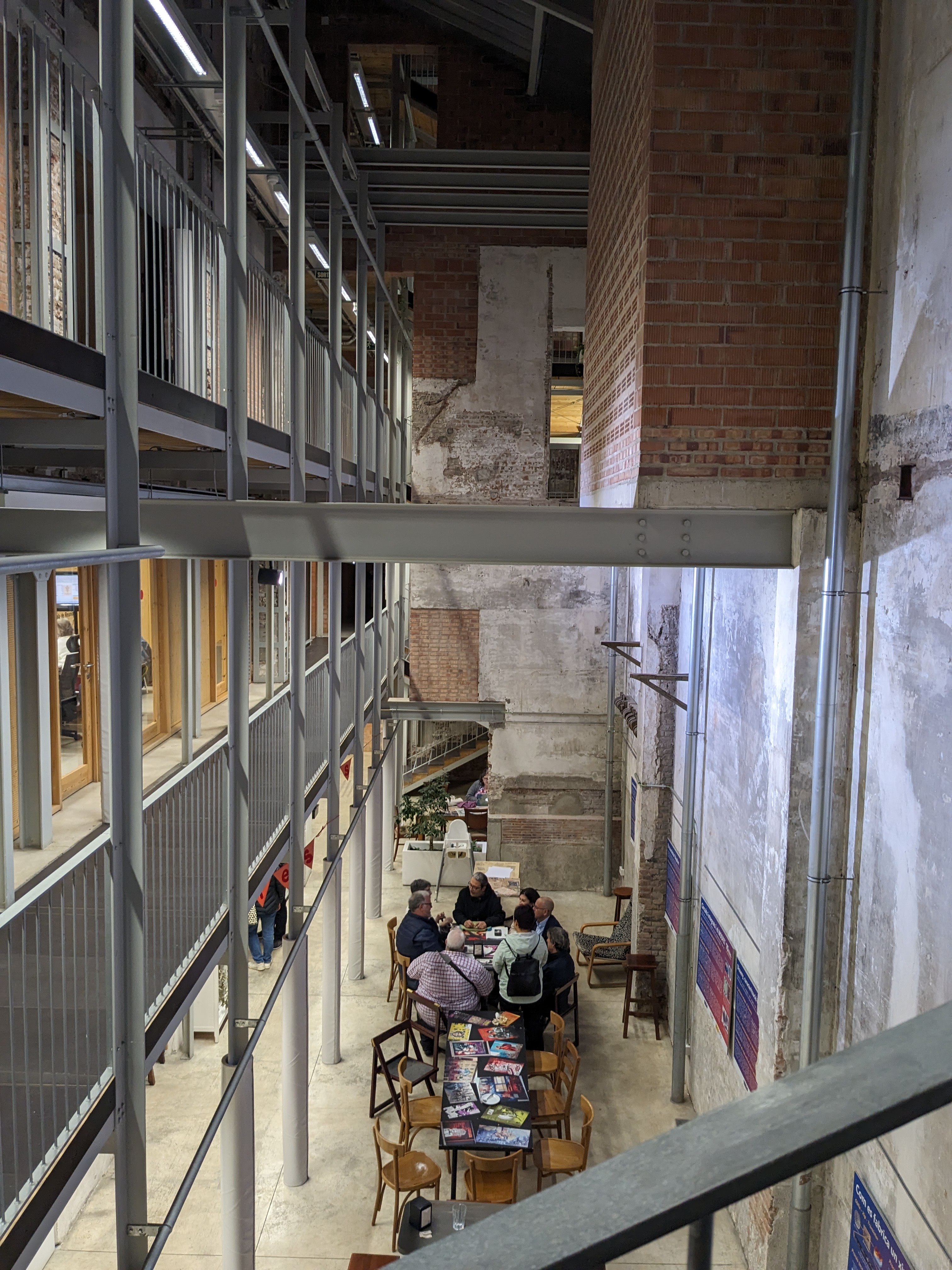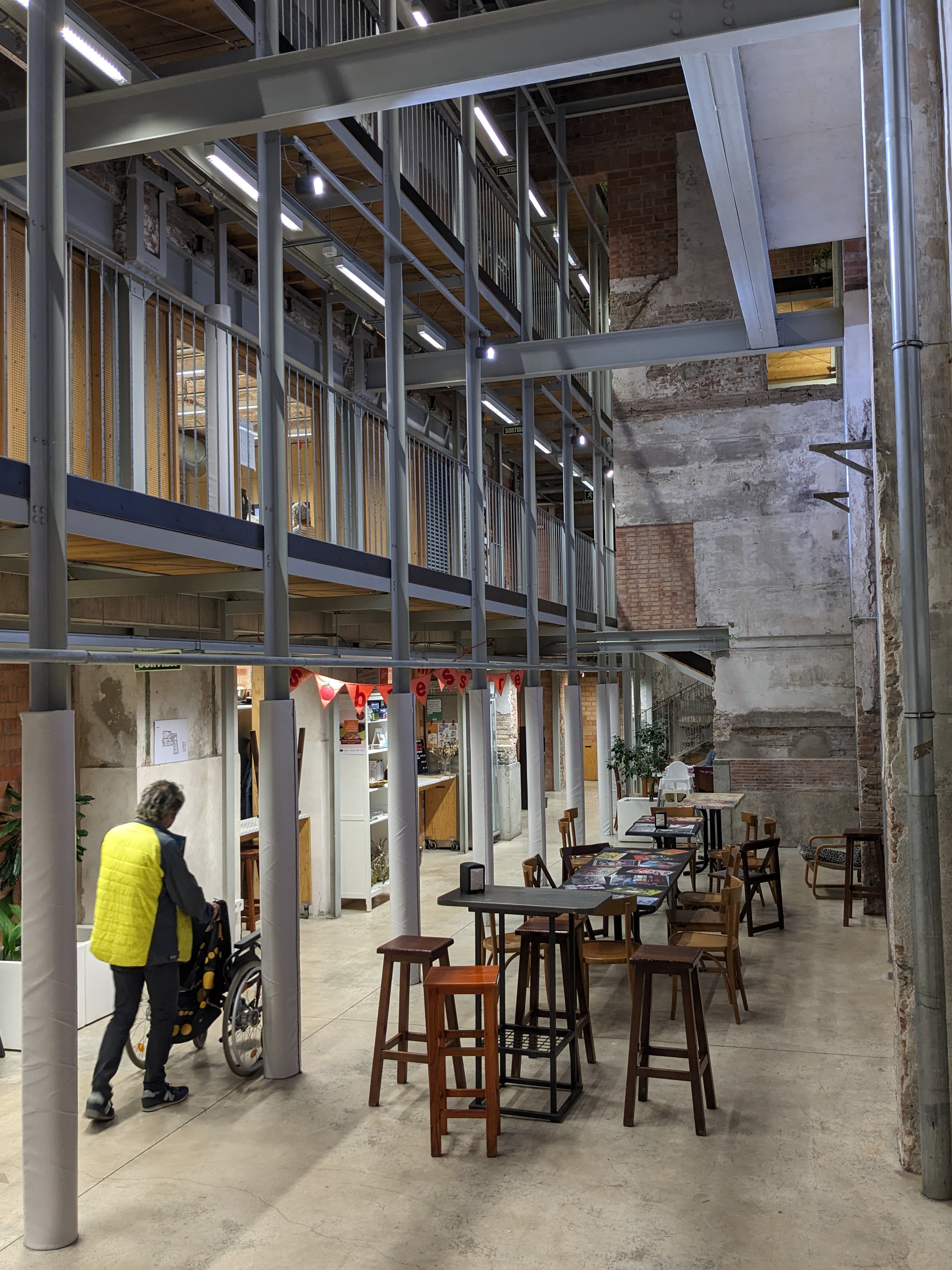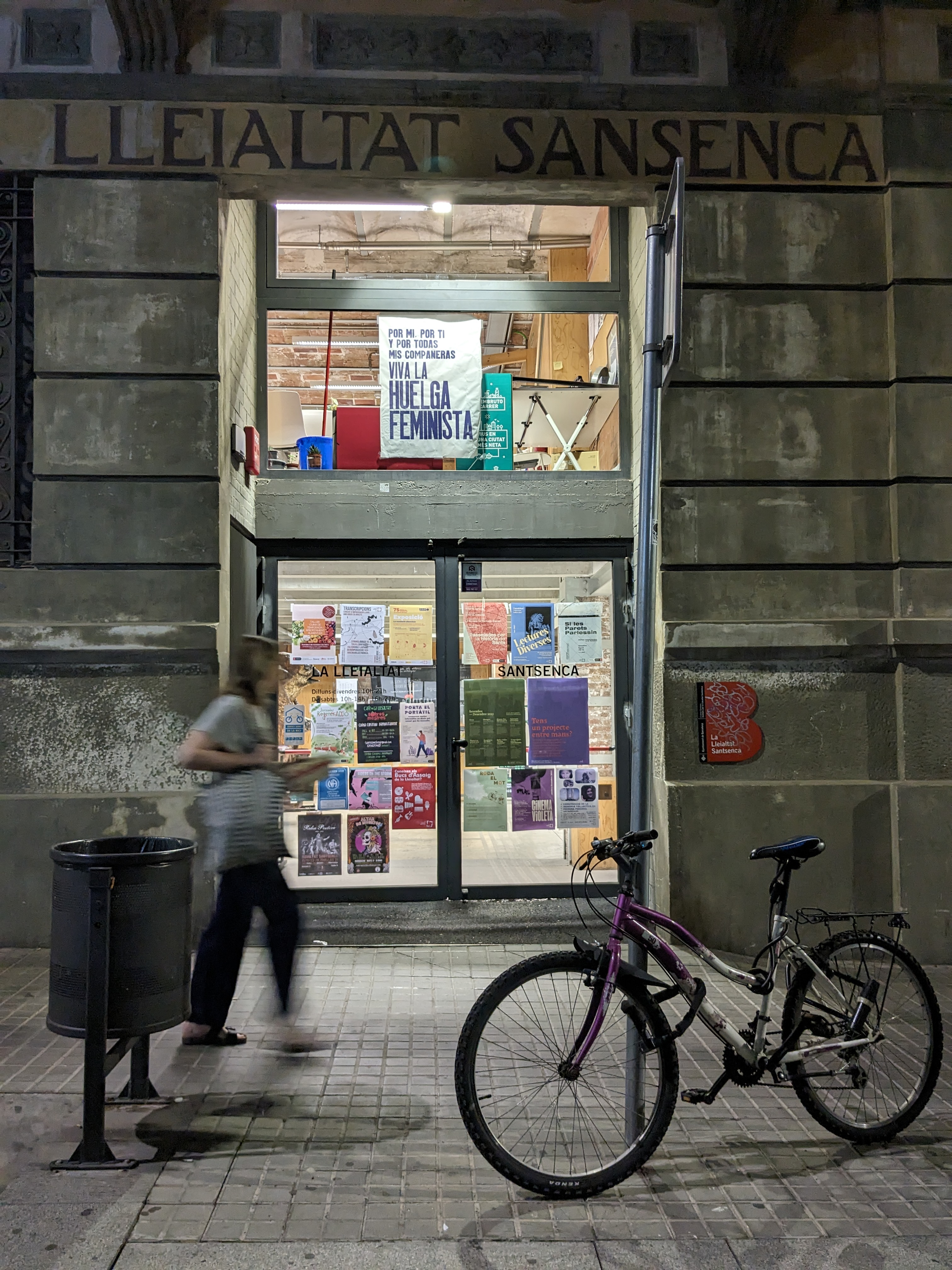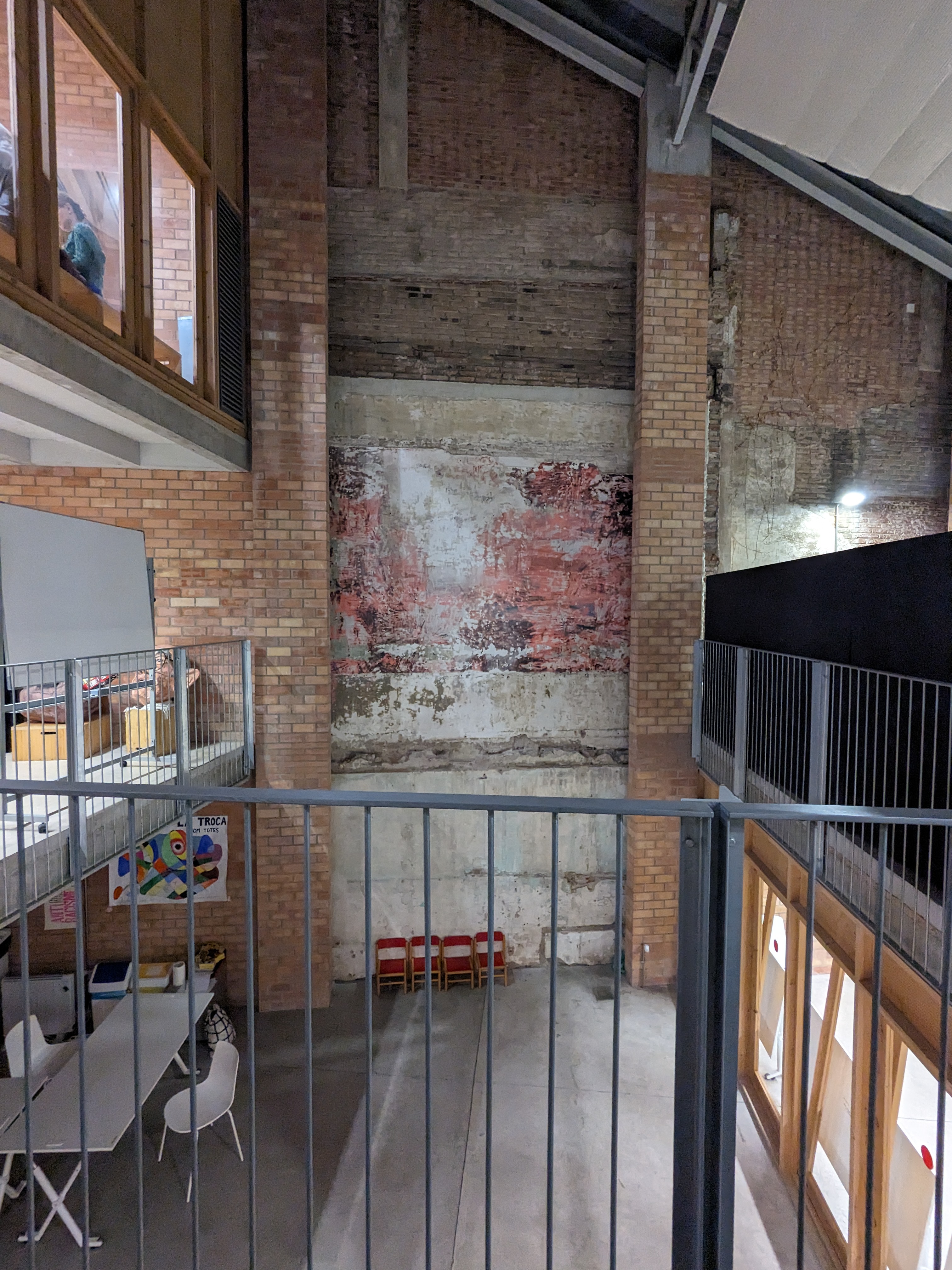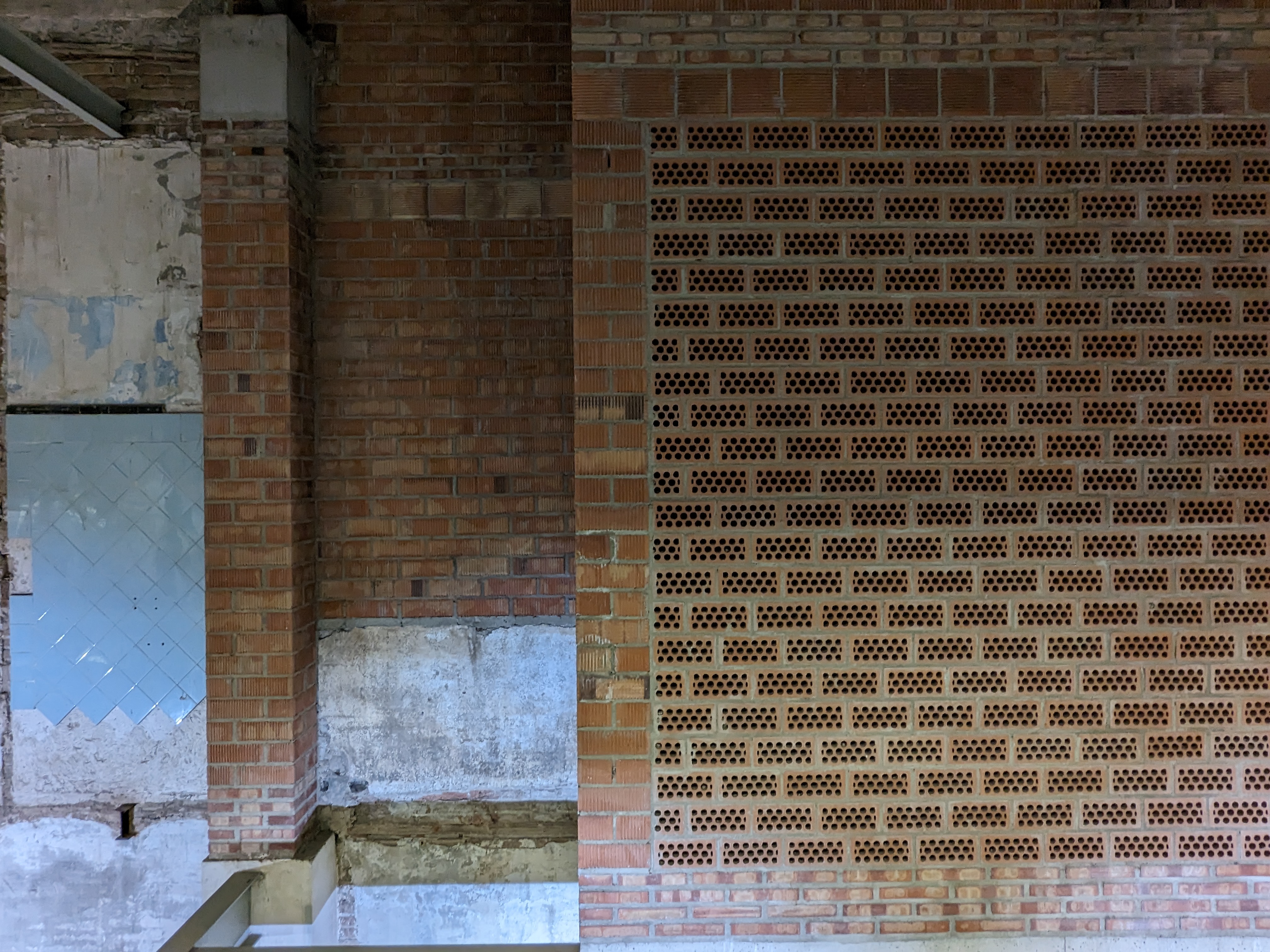Lleialtat Santsenca Civic Centre
Created on 20-06-2024 | Updated on 18-10-2024
The Lleialtat Santsenca Civic Centre is a community managed municipal facility in the neighbourhood of Sants in Barcelona, the promotes culture, community and cooperation. Originally built in 1928 by architect Josep Alemany i Juvé for the Cooperativa Obrera La Lleialtat Santsenca, the building has served various roles, including a cooperative, a nougat factory, and a dance hall, before being reclaimed by neighborhood groups in 2009. The renovation, led by H-Arquitectes, followed adaptive reuse principles and focused on preserving historical elements, maximizing reuse of materials, and incorporating sustainable features like passive climate control. The facility operates under civic management principles, supported by Barcelona’s legal framework and active community networks, presenting an example of public-community collaboration that drives institutional change. Managed by the Coordinadora d’Entitats per la Lleialtat Santsenca, it offers diverse services such as event spaces, a café, art classes, and sustainable projects, fostering community engagement and support for the entire neighbourhood of Sants.
Architect(s)
(original) Josep Alemany i Juvé; (refurbishment) H Arquitectes
Location
Barcelona, Spain
Project (year)
2014-2017
Construction (year)
1928
Housing type
civic centre
Urban context
neighbourhood center
Construction system
brick and concrete (original), steel and wood (refurbishment)
Status
Building renovation
Description
La Lleialtat Santsenca is a community managed municipal facility aiming to the promotion of culture, neighbourhood and cooperation. The space aspires to be a place of reference in the neighbourhood, hosting initiatives and activities open to everyone that promote community life through participation, strengthening the social bonds and creating networks and partnerships (La LLeialtat Santsenca, n.d.).
The historic context
The original building, designed by the architect Josep Alemany i Juvé, was constructed in 1928 to host the Cooperativa Obrera La Lleialtat Santsenca, which was founded in 1891 and was one of the oldest working-class cooperatives in the neighbourhood of Sants. The building embodied the spirit of solidarity among the working class and became a hub for social exchange and socio-political activity, housing a food shop, a bakery, a café, a boardroom, small theatre and library, along with storerooms and administrative offices. (From Workers’ Cooperative to Civic Center, the Lleialtat Santsenca Building in Barcelona, n.d.).
During Franco’s regime, the building was expropriated and reopened in 1941 under Falangist management. In 1950 the cooperative was merged with another cooperative called La Flor de Maig and the building was used as a nougat factory -on the ground floor- and dance hall called Bahia -on the first floor-, becoming a musical landmark for the entire city of Barcelona during the 50s and 60s before eventually shut down by the Barcelona City Council in 1988. In December 2009, after years of abandonment, the building was reclaimed by sixty neighbourhood entities, who came together to recover it as a public asset (Somerville, 2020).
The coordination of the neighbourhood groups to reclaim this heritage asset occurred as a result of a long tradition of grassroot movements against urban regeneration plans, especially mobilised in the neighbourhood of Sants, such as the “Save Sants” in the 1970s (originally referred to as “Salvem Sants”). The 2008 crisis yield a renewed wave significantly directed towards the topic of alternative economies through neighbourhood-based associativism (Somerville, 2020). In this breeding context, the neighbourhood of Sants retained a very active character, aiming to recover iconic, often industrial sites of heritage back to public use and social benefit, reviving the original principles of support and solidarity of the working-class populations.
The building renovation
In 2012, BIMSA (Barcelona d’Infraesreuctures Municipals) launched a competition for the renovation of the building, that was won by the architectural studio H-Arquitectes. The renovation was based on three fundamental principles: highlighting the historic value of Lleialtat Santsenca; maintaining and reusing the maximum possible original building and materials; and embracing the collaborative processes driven by neighbourhood organisations of reclaiming and recovering the building. The restoration involved demolishing unusable elements while preserving structural bodies, creating a large central atrium for light, ventilation and visibility and incorporating features for sustainability, such as passive climate control, solar capture and minimal mechanical air conditioning. (Centre Cívic Lleialtat Santsenca 1214 - H ARQUITECTES, n.d.).
The legal context
Along with a very active social movement towards associativism, Barcelona has a well-established history of public facilities managed by citizens’ associations. This has been facilitated through public-community collaboration that are established and protected by Article 43 of the “Carta Municipal de Barcelona” which states that:
“Non-profit citizen entities, organizations, and civic associations may exercise municipal competencies or participate on behalf of the City Council in the management of services or facilities whose ownership belongs to other public administrations. The civic management of municipal competencies can be used for activities and services that can be managed indirectly, is always voluntary and not-for-profit, and is awarded by public tender when there are several entities or organizations with identical or similar characteristics.” (Diari Oficial de La Generalitat de Catalunya, Carta Municipal de Barcelona, 1999, p. 219).
The principle of civic management has been further strengthened by the creation of networks of associations throughout Barcelona, such as the Plataforma de Gestió Ciutadana[1], which since 2009 is committed to protect and promote all the associations that manage or aspire to get involved in the management of a public facility. Another network of community-managed spaces is Xarxa D’espais Comunitaris (XEC) that coordinates different projects to promote transparency and mutual support through generating meeting points, training and self-organisation (XES - XEC, n.d.).
The community management
Within this context, the space is managed by a nonprofit organisation, called Coordinadora d’Entitats per la Lleialtat Santsenca, consisted of neighbours, associations and collectives of Sants that share the values of cooperation, community action, respect and freedom. The sixty neighbourhood collectives are incorporated according to their scope in three lines of action: neighbourhood, culture and cooperation. The management model follows a democratic and transparent structure that consists of the Fòrum de la Lleialtat, a collective decision-making tool open to all neighbours and local organisations that wish to participate, as well as operating commissions responsible for community action, economic management, technological support, programming, communication and memory (La LLeialtat Santsenca, n.d.).
The services
Lleialtat functions as a community center, offering various services organised from and in response to local needs. To begin with, the space itself is offered to neighbourhood collectives, either for regular use, in the annual cost of 50€, or for the organisation of special events, such as gatherings, celebrations and concerts, in an affordable cost. The flexibility and adaptability of the space makes it suitable to accommodate any kind of activity. The available spaces offered to the collectives include open-plan and multi-purpose rooms equipped with sound protection, seating and tables, lighting and presentation equipment; a big atrium that serves as an exhibition space as well as the seating area of the Lleialtat café; meeting rooms; a computer room; an auditorium; a terrace; a dance room; (La Lleialtat Santsenca, 2020) and a sustainable mobility vehicle (La LLeialtat Santsenca, n.d.).
As far as the individual neighbours are concerned, the space offers a café, a computer support space, a bank of resources, as well as the daily program organised by the collectives, such as art classes, theatre courses, dance lessons, guided tours, exhibitions and presentations, along with projects for sustainable consumption (La LLeialtat Santsenca, n.d.).
----------
[1] See https://casaorlandai.cat/lassociacio/gestio-ciutadana/plataforma-de-gestio-ciutadana/
Alignment with project research areas
La Lleialtat Santsenca presents interconnections with all RE-DWELL’s research areas for affordable and sustainable housing, namely Community Participation; Policy and Financing; and Design, Planning and Building. Specifically, it presents a successful case of community organisation to confront top-down urban regeneration plans, by reclaiming and recovering a public asset for the benefit of the neighbourhood. Furthermore, its management model showcases an example of public-civic (or public-community) collaboration for the governance and non-commodified use of public assets supported by local policies. Finally, its renovation followed principles of adaptive reuse, along with consideration for environmental, social and economic sustainability.
Alignment with SDGs
La Lleialtat Santsenca relates to the SDG 11 Sustainable Cities and Communities, as it exemplifies a self-sustainable mechanism for managing public assets at a neighbourhood scale for the benefit of the local community. Moreover, it provides an alternative to the predominant public-private (or state-market) governance model, by following a community management approach on public property. This approach transforms institutional norms by strengthening the role of citizens as active decisionmakers in the creation and governance of the city and therefore contributed towards the SDG 16. Peace, justice and strong institutions and SDG 17. Partnerships for the goals.
References
Centre cívic Lleialtat Santsenca 1214 - H ARQUITECTES. (n.d.). https://www.harquitectes.com/proyectos/lleialtat-santsenca-1214/
From workers’ cooperative to Civic Center, the Lleialtat Santsenca building in Barcelona. (n.d.). https://www.inexhibit.com/case-studies/from-workers-cooperative-to-civic-center-the-lleialtat-santsenca-building-in-barcelona/
Diari Oficial de la Generalitat de Catalunya, Carta Municipal de Barcelona, Pub. L. No. Titol IV, Capitol II, Article 34, 219 (1999).
La Lleialtat Santsenca. (2020). La Lleialtat Santsenca Dossier d’espais.
La LLeialtat Santsenca. (n.d.). Retrieved December 28, 2023, from https://lleialtat.cat/
Somerville, E. (2020). The musealization of Barcelona’s industrial past. Universitat Automata de Barcelona.
XES - XEC. (n.d.). Retrieved December 29, 2023, from https://xes.cat/comissions/xec
Related vocabulary
Collaborative Governance
Social Sustainability
Urban Commons
Area: Community participation
Created on 26-10-2023
Read more ->Area: Community participation
Created on 03-06-2022
Read more ->Area: Community participation
Created on 14-10-2022
Read more ->Blogposts
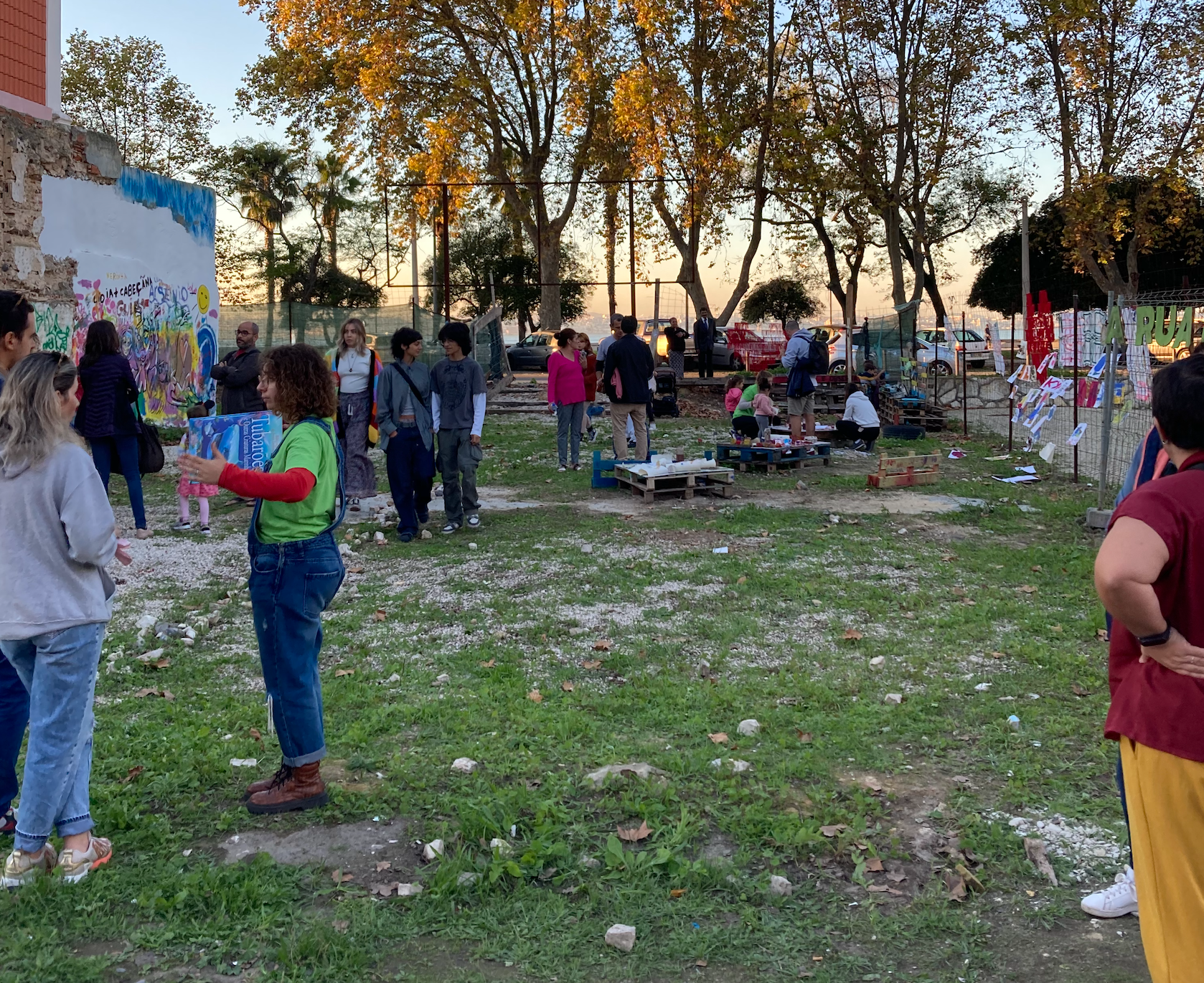
Exploring Urban Innovation in Lisbon
Posted on 20-11-2024
Secondments
Read more ->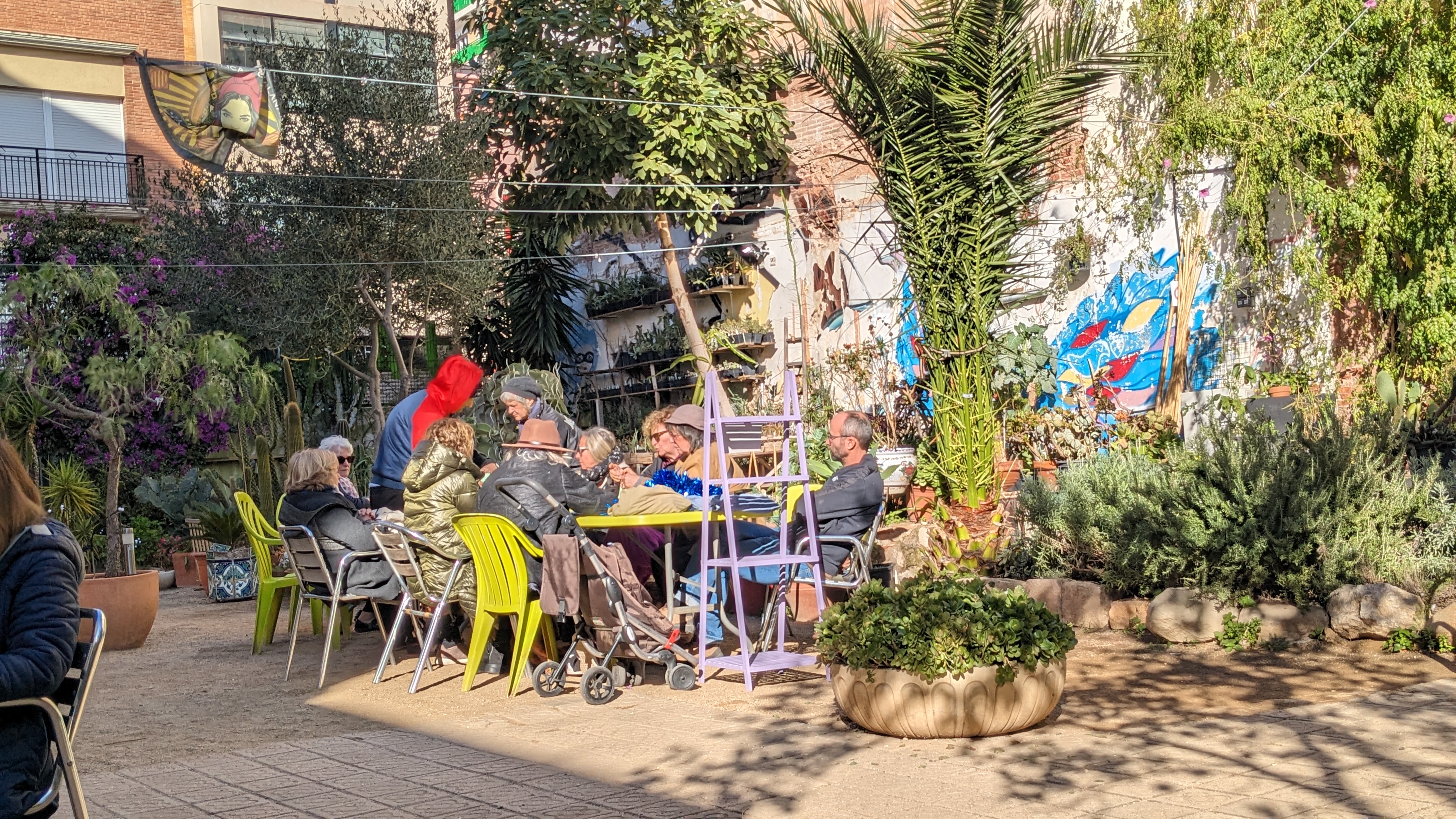
Exploring the Panorama of Barcelona's Urban Commons and the Dynamic State Relationships
Posted on 22-01-2024
Secondments
Read more ->
